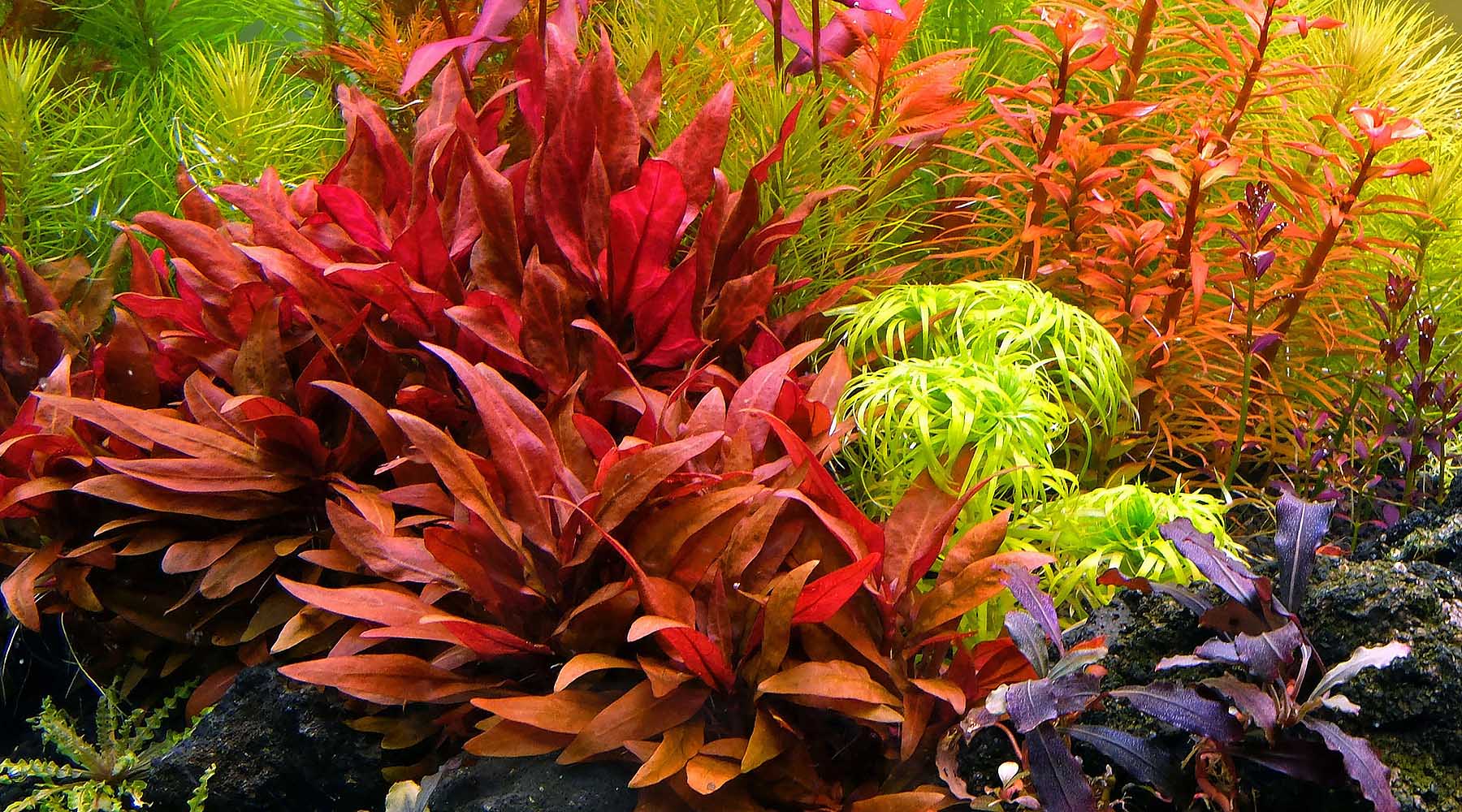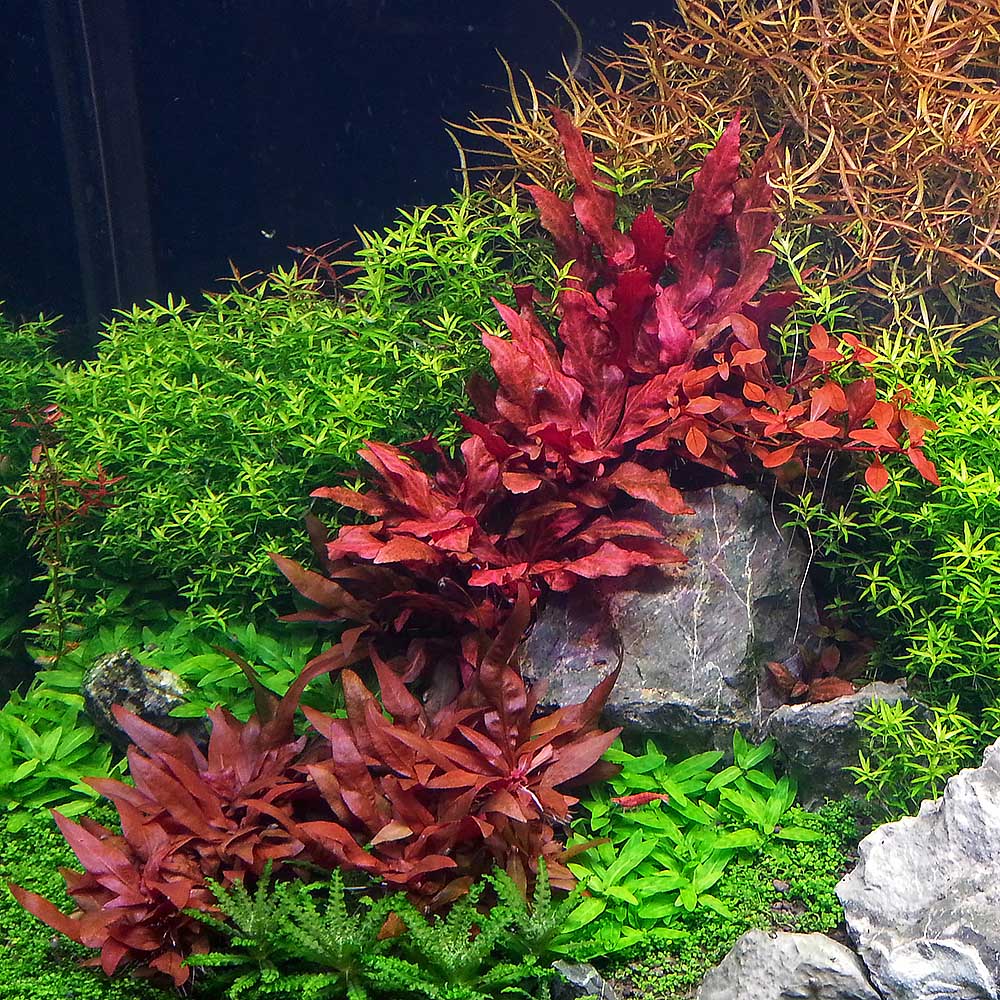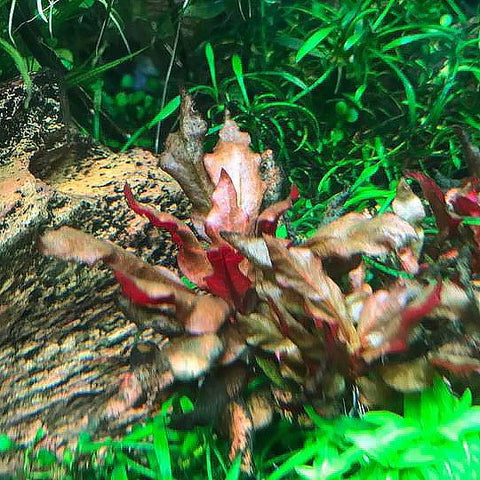Your Cart is Empty
Shop
We are a brand born of an obsession with performance, a belief in good science, and a knack for invention.
Read our story.
We are a brand born of an obsession with performance, a belief in good science, and a knack for invention.
Read our story.

Good Science
We define it as a combination of discerning research and real world results.
We define it as a combination of discerning research and real world results.

How to grow "AR"
August 18, 2020 3 min read

The red Alternanthera reneckii (AR) comes in different varietals, with the AR "mini" gaining popularity these days because it is shorter and redder than the other varietals. In the picture below, we have the shorter "mini" in the foreground and the slightly taller variegated "Rosanervig" behind it. The 'mini' varietal is a good foreground/midground plant, while taller varietals such as the 'rosaefolia' are suitable for backgrounds in a planted aquarium. They are generally slow growers compared to other stem plants, and can take a certain amount of overcrowding and shading, making them very easy to use in aquascaping.

Alternanthera is slower growing compared to other stem plants and the AR "mini" version can grow very compact. Due to its slower growth nature, it is more forgiving with regards to nutrients or CO2 demand. Using a soil based substrate helps a lot in having stable growth in this particular species.
When trimming, it prefers not to be uprooted & replanted. This means that better results are obtained by cutting off tall shoots and allowing new side shoots to sprout naturally from the remaining base. This technique is scary for newer aquarists as it means you cut off the healthiest looking top portions of the plant, but it gives a denser bush over time and recovery time is actually reduced for this species. You can replant the cut top elsewhere.
Good lighting helps in coloration, as is the case with most colored plants. The ones in the pictures here are grown well in excess of 100umols (PAR) of light. Using higher lighting also allows greater density for leaves. The difficult part is maintaining an algae free tank with more light. Alternanthera reineckii are slow growers and very susceptible to algae. The real test in growing them well is often maintaining an algae free environment long term.

AR "mini" in the foreground and a variegated varietal behind it. The variegated version of Alternanthera reineckii has visible vein patterns and striking foliage.

Key success factors
- Stable tank parameters
- Grows better in soil based substrates
- Vulnerable to algae - so having a clean tank helps
- Dislikes being moved - Do not uproot often, trim away tops and allow rooted base to regrow instead
- Flexible in terms of: temperature, water hardness/alkalinity, CO2 levels
How to get it redder
- Stronger lighting with higher red/blue spectrum
- Good fertilization regime
- Long term consistency
Common problems
Far too often Alternanthera reineckii ends up looking like the sample below with twisted algae covered leaves.

This can be due to a variety of reasons:
- Too frequent uprooting - plant did not get chance to establish
- Poor growth parameters after transplanting- CO2/nutrients/light
- Unstable water parameters - ammonia, tank biologically immatured
- Poor algae management
- Substrate issues (rarer)
Alternanthera reineckii is not a demanding plant - often it suffers because aquarists try to do too much rather than too little; changing too many variables frequently. Alternanthera reineckii requires a sustained period of stability to do well.
In rare cases, it can occur due to over zealous trace dosing (EI users especially). If so, reduce trace dosing by 80% and observe.
If your plants are healthy (both new and old leaves) but the leaves are curled more than usual, try increasing calcium levels in the tank.
Here are some related articles for further reading.
1. To learn more about algae control, click here.
2. For detailed steps on how to cycle a tank, click here.
unlock your true potential
Grow anything, defeat algae, create amazing aquascapes






















